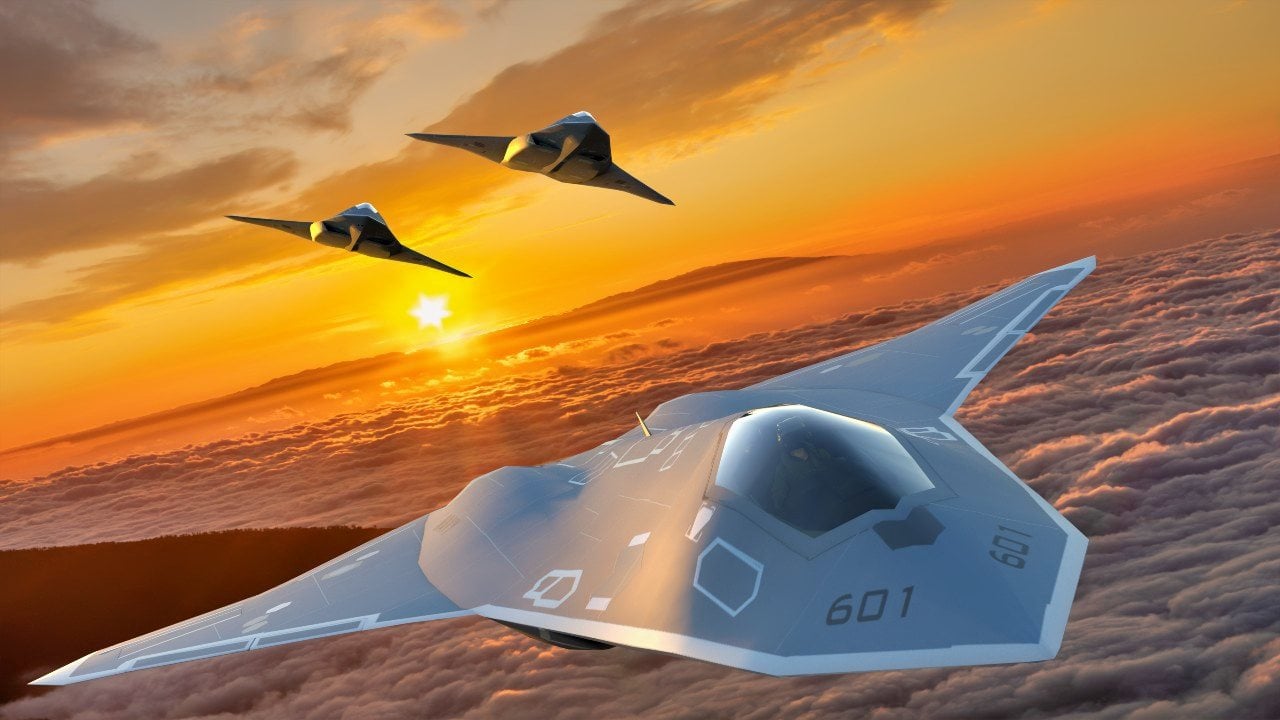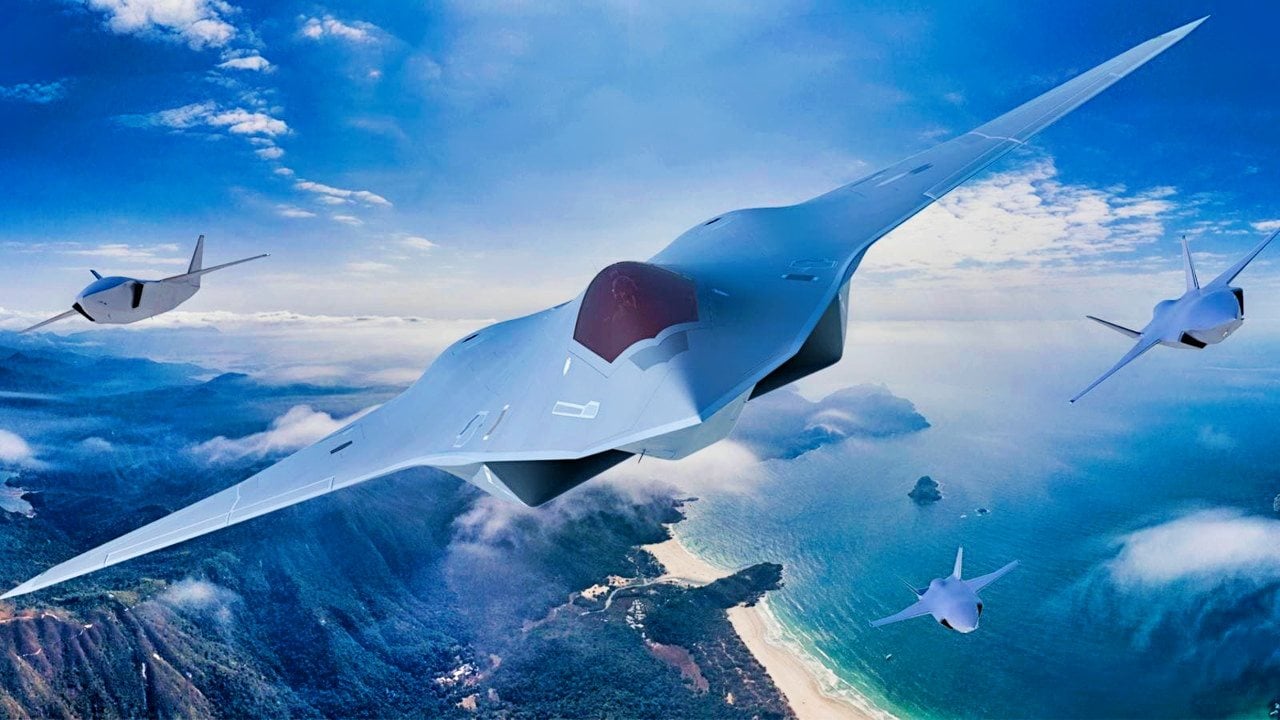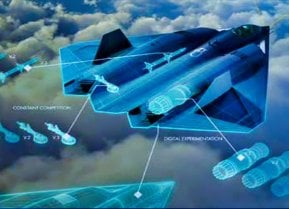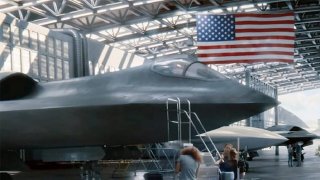NGAD: America's $300,000,000 Stealth Fighter Is Simply Unaffordable
This year, America's interest payments surpassed the U.S. defense budget, posing a significant challenge as geopolitical threats from rivals like China and Russia rise. The U.S. Air Force's Next Generation Air Dominance (NGAD) program, aimed at developing a sixth-generation warplane, faces financial obstacles due to its high costs.
Summary and Key Points: This year, America's interest payments surpassed the U.S. defense budget, posing a significant challenge as geopolitical threats from rivals like China and Russia rise. The U.S. Air Force's Next Generation Air Dominance (NGAD) program, aimed at developing a sixth-generation warplane, faces financial obstacles due to its high costs. With each plane projected to cost $300 million, the program is seen as a potential burden on the already strained economy.

-Critics argue that the focus should be on more cost-effective technologies, like NGAD's new drone systems, instead of expensive, multi-functional platforms.
-The current situation mirrors the Soviet Union's economic strain during the Cold War, emphasizing the need for fiscal prudence to avoid exacerbating America's debt crisis.
NGAD Program at Risk: America's Debt Crisis Threatens Future Defense Projects
This year, America’s interest payments passed the total U.S. defense budget (which is the largest item in the US budget every year, until now). These unwanted financial realities come at a time when the geopolitical threats facing America are at a high.
What’s more, the United States is being challenged today by competent and capable rivals, such as China and Russia, for global supremacy. A debt crisis would be crippling.
Meanwhile, the U.S. Air Force has been working on developing a sixth-generation warplane, part of a larger program known as Next Generation Air Dominance.
But the Air Force cannot afford the NGAD program, unless it receives gobs of tax dollars that will likely be less forthcoming in the coming years.
System of Systems
NGAD is often described as a “system of systems.” It truly is. NGAD is an ecosystem of technologies undergirding the proposed manned sixth-generation warplane. But even the program’s staunchest backers are beginning to fear for its future.
The idea that struggling Americans would be expected to further fund the lavishly funded military-industrial complex by supporting a plane that costs $300 million per unit is rubbing people the wrong way.
There’s no way to get the costs of the NGAD down. Well, there might be some ways, but official Washington won’t hear of them. They would require the government restraining the appetites of the nation’s biggest defense contractors. But to be fair to those contractors, the requirements the Air Force is putting into the program all but ensure that cost-saving measures are impossible.
After all, the NGAD is basically the Air Force’s attempt to leapfrog its high-tech rivals in China and Russia by throwing so many advanced systems into this “System of Systems” that no other power could keep up.
America as the New Soviet Union
This is precisely where the Soviet Union was in its final years. The Americans were naturally innovating new technologies, notably defense capabilities, and the Soviets were trying vainly to keep up. In so doing, the Soviets irrevocably broke their economy and caused their own demise.
They could not keep pace with the Americans and their economy was shuttered as a result. That was the true story of the end of the Cold War. That, more than anything else, was how Ronald Reagan helped bring down the Soviet Union.
Looking at America today, though, it’s hard not to see how we are not in a similar position as Gorbachev’s USSR in the 1980s. The NGAD is just another example of the bloat of the country’s defense programs.
Rather than identify absolutely critical technologies that are cost-effective and focusing on those, the Pentagon wants their new system to do everything for everyone all the time. It won’t work, and it’s going to exacerbate the coming debt crisis.
The solution is to look specifically at the NGAD’s new drone systems. Because that’s where the future of air warfare is going. Marrying these systems to preexisting airframes is the way forward.
Not Everything Needs to Be Shiny & New Like NGAD
At a time when the Russians are defeating the Ukrainians with antiquated tanks and planes, when the Taliban roundly defeated the American superpower with roadside bombs and guerilla tactics, the idea that we need to be spending what we are on these next-generation platforms is ridiculous.

Build the NGAD drone swarms, yes. Leave the rest on the drawing board. Before the Air Force and its supporters further bankrupt the United States.
Author Experience and Expertise: Brandon J. Weichert
Brandon J. Weichert, a National Interest national security analyst, is a former Congressional staffer and geopolitical analyst who is a contributor at The Washington Times, the Asia Times, and The-Pipeline. He is the author of Winning Space: How America Remains a Superpower, Biohacked: China’s Race to Control Life, and The Shadow War: Iran’s Quest for Supremacy. His next book, A Disaster of Our Own Making: How the West Lost Ukraine, is due October 22 from Encounter Books. Weichert can be followed via Twitter @WeTheBrandon.
All images are Creative Commons or Shutterstock.
From the Vault
Russia Freaked Out: Why the U.S. Navy 'Unretired' the Iowa-Class Battleships
Battleship vs. Battlecruiser: Iowa-Class vs. Russia's Kirov-Class (Who Wins?)


